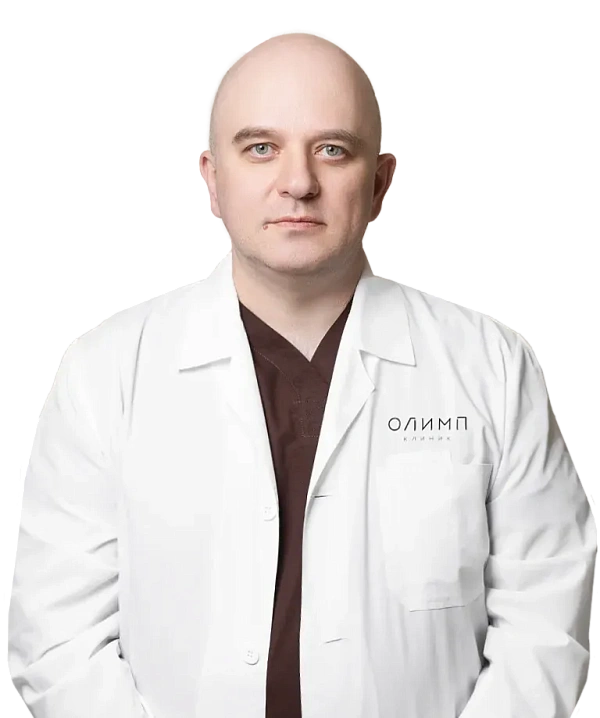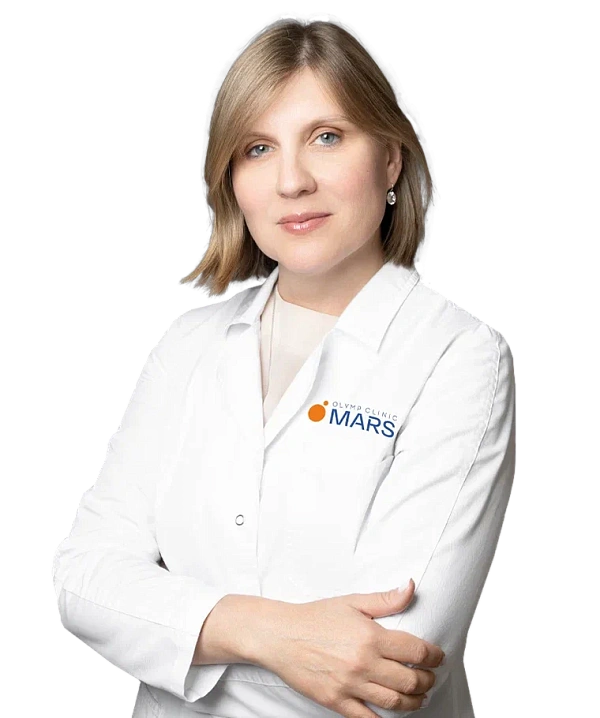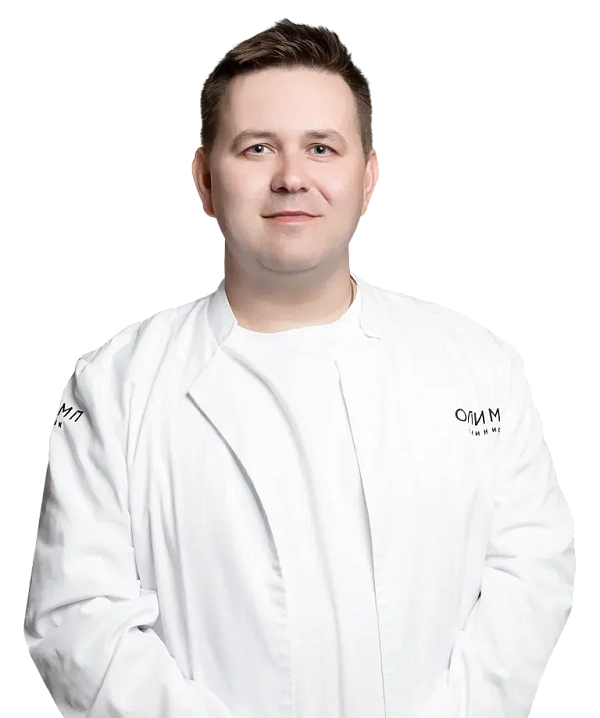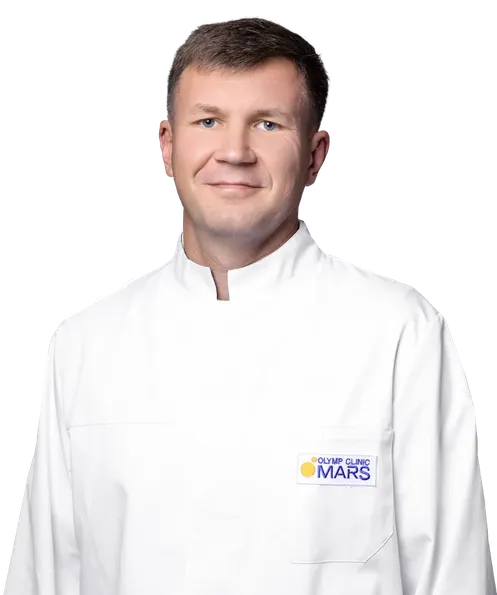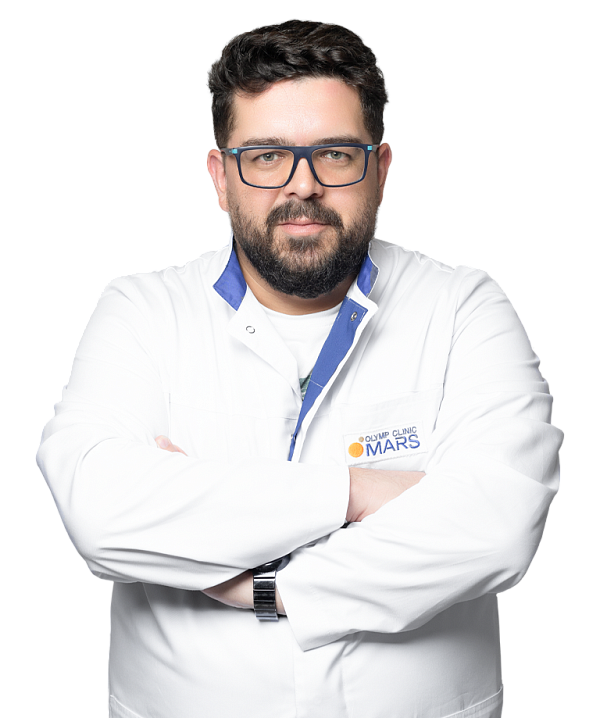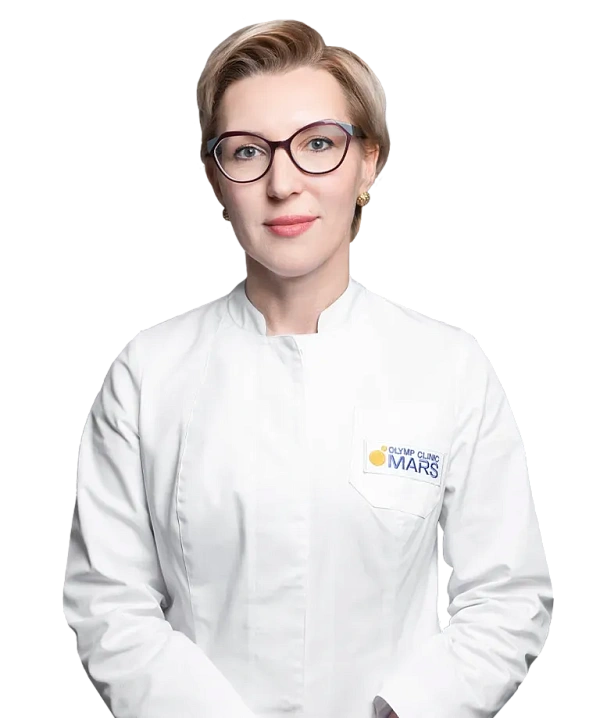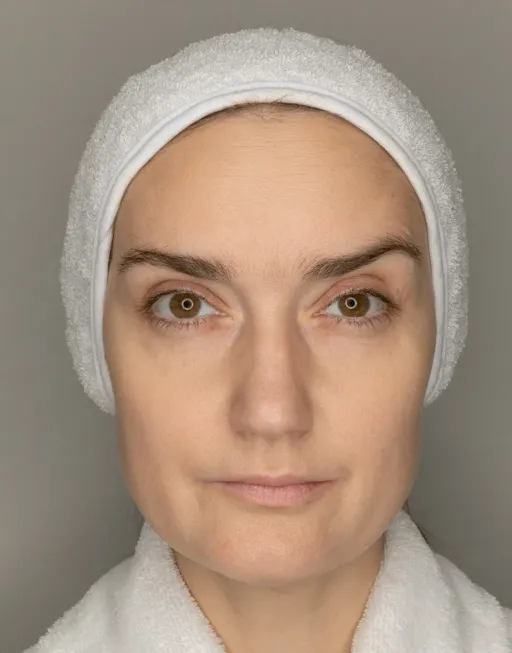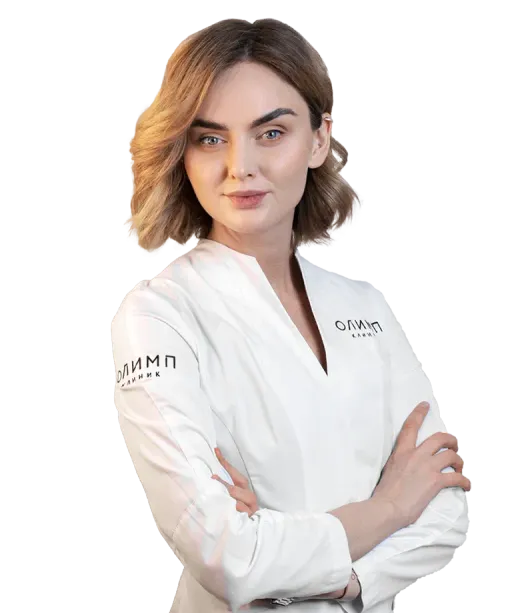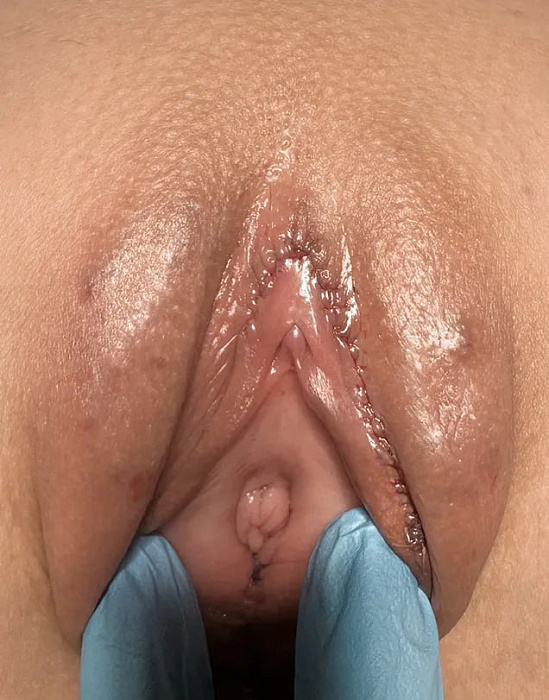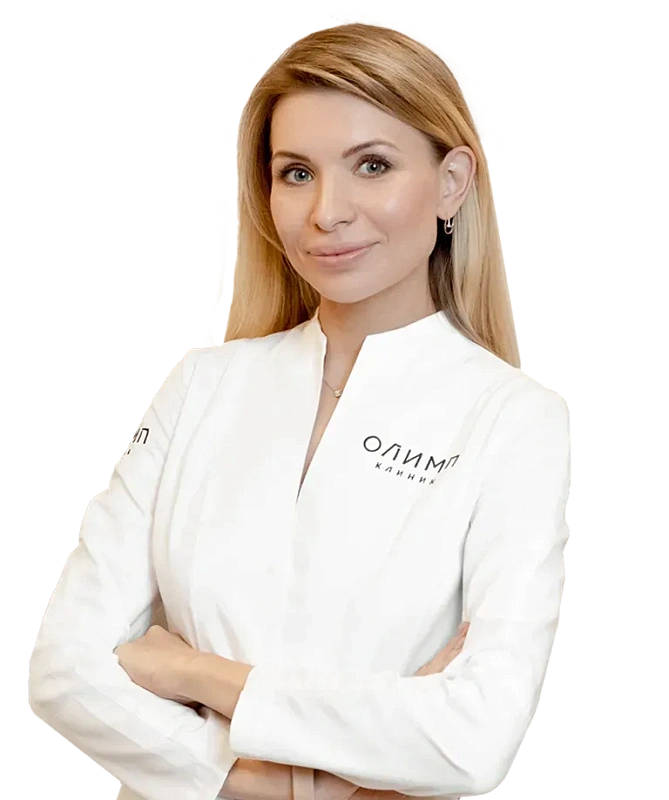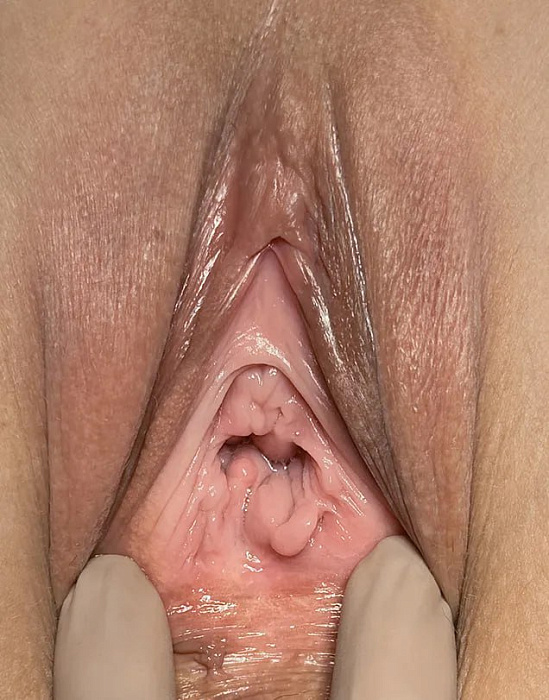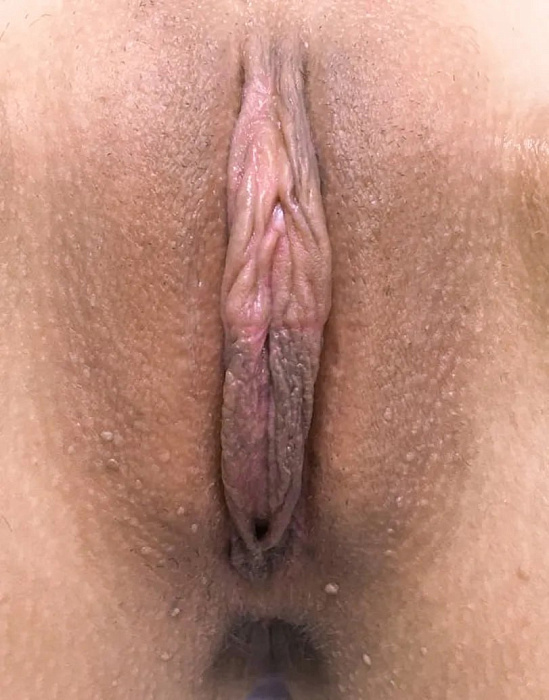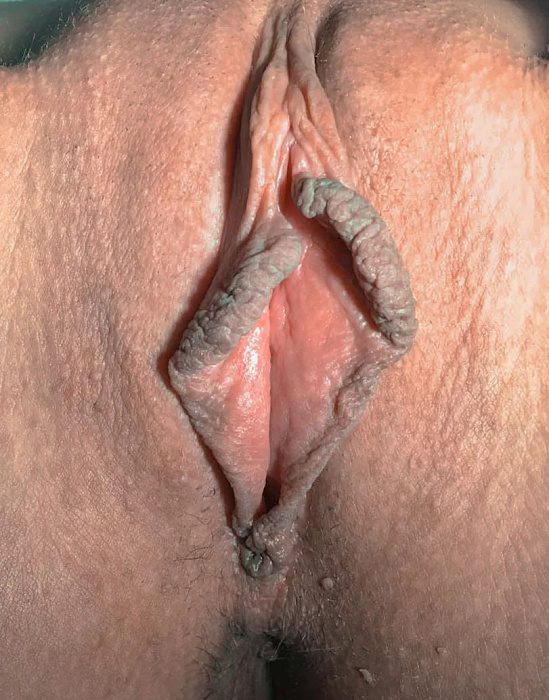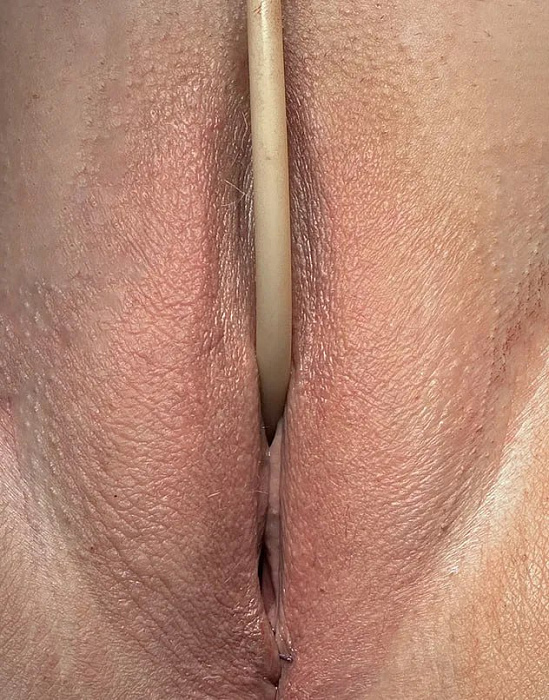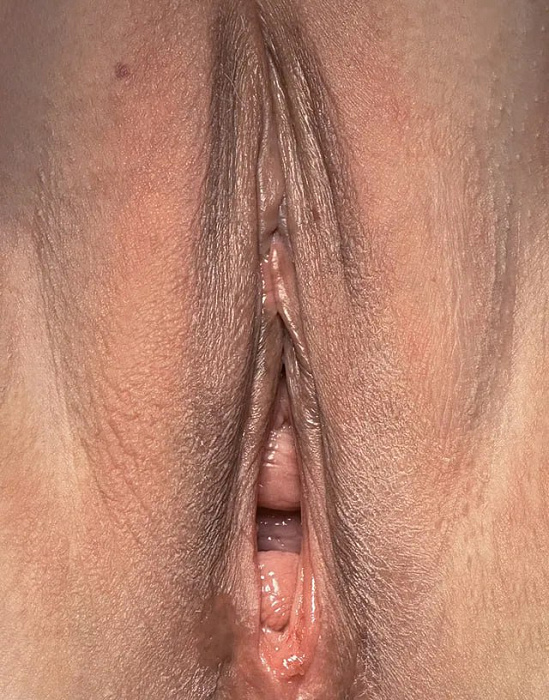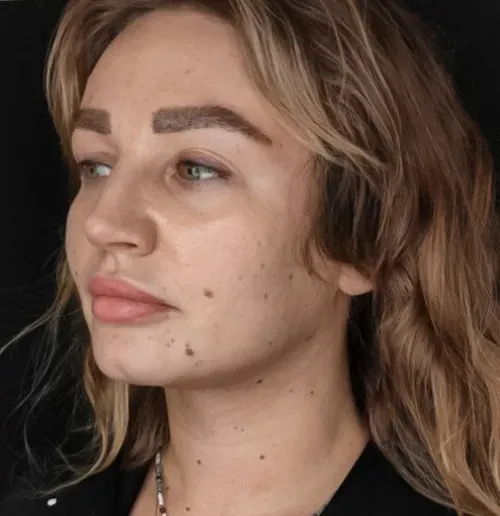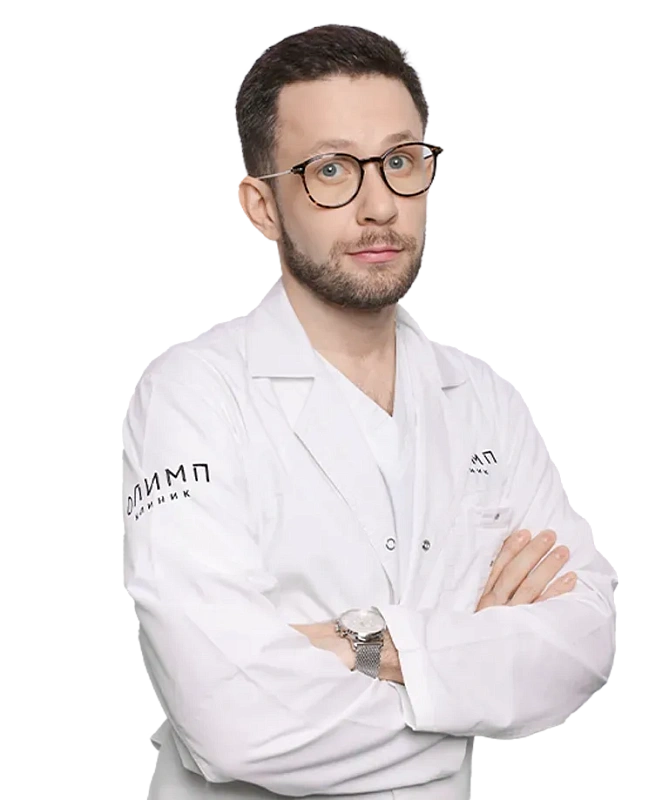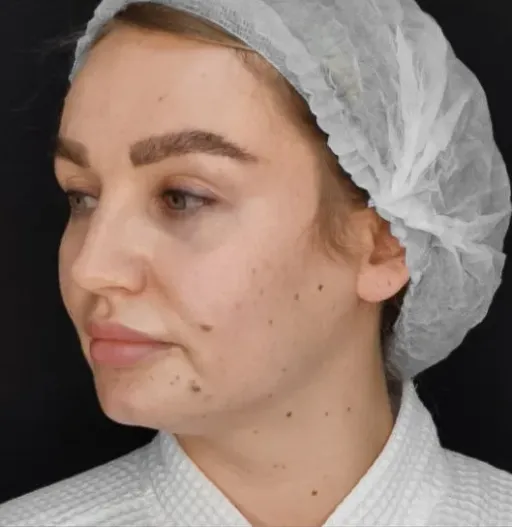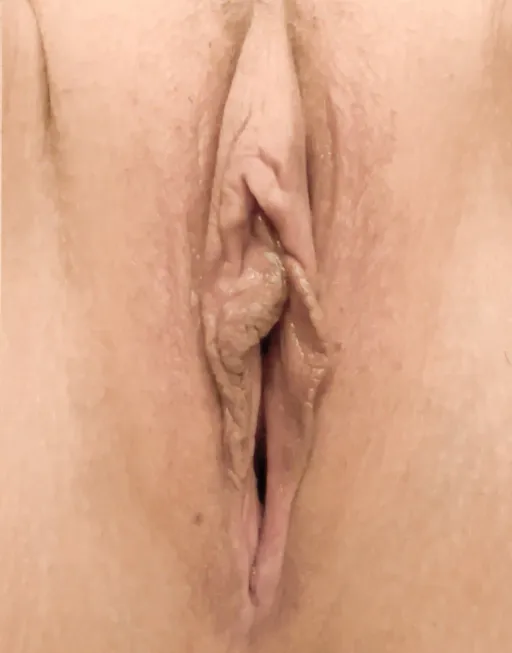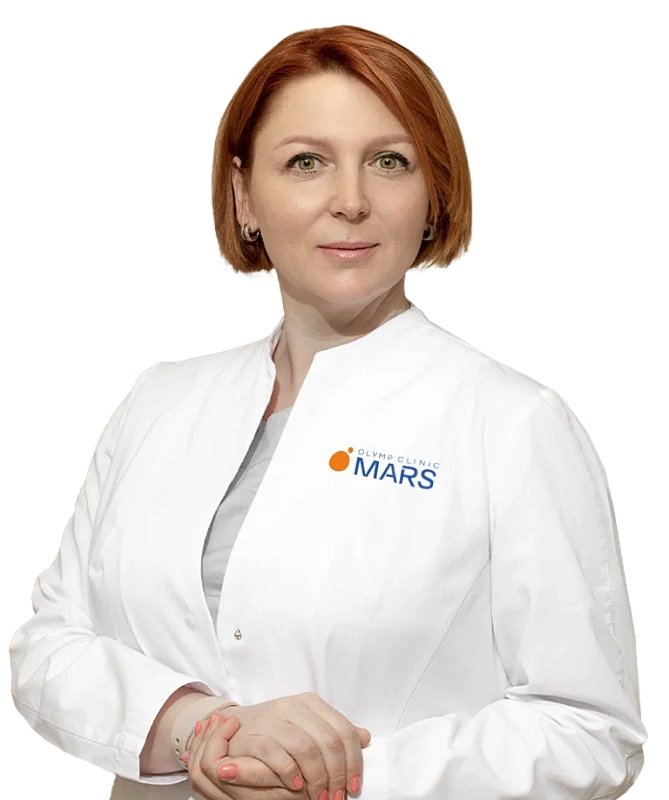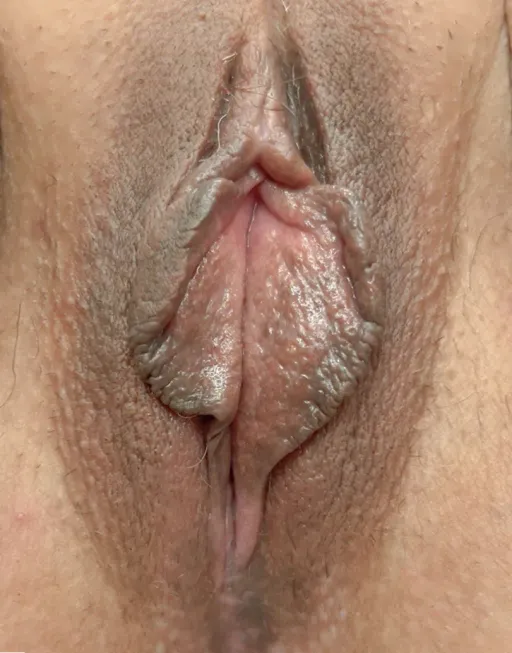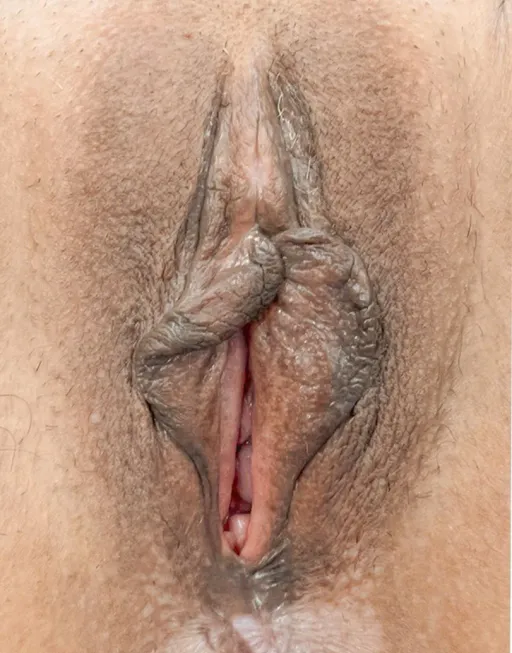Element has not been found.
Frequently Asked Questions
What if I don't use the entire deposit?
What if I don't use the entire deposit?
Under what anesthesia is the procedure performed?
Does it hurt to undergo a gastroscopy?
Is it painful to undergo a colonoscopy?
Is it possible to do without medications?
What diseases does an allergist treat?
How quickly do blisters disappear after starting treatment?
How do I know if I have an allergy and not a cold?
What does the GI consultation include?
- thorough complaint assessment;
- disease progression review (if you've had the problem for a long time);
- previous tests evaluation;
- previous treatment effectiveness assessment;
- prescribed medication evaluation;
- previous surgical procedures review;
- family history risks aggravation assessment.
Following the consultation, the GI specialist conducts an examination and determines the necessary follow-up examinations to confirm the diagnosis and prescribe appropriate treatment.
The scheduling of follow-up visits is then determined.
The specialist will help you develop an individual checkup plan, taking into account all the specifics of your health condition.
Is it possible to add family members to the program?
Do I need a special examination before surgery?
- the patient is over 60 years old;
- there was a history of strokes, heart attacks of any period of prescription;
- the patient suffers from arrhythmia, diabetes mellitus;
- - the patient is constantly taking blood-thinning drugs;
- previously, an aortic and other artery aneurysms were diagnosed.
How often do I need to have a gastroscopy?
Do I need to follow a diet before the consultation?
Can an allergy go away on its own?
Is it possible to completely cure chronic urticaria?
How often should I take allergy medications?
How do I contact my supervisor?
Why contact an allergist if symptoms appear rarely?
What should I do if Quincke's edema appears?
How should I prepare for the consultation?
- Prepare your questions in advance, so that you don't forget anything at the appointment.
- Print out or email us all available test and examination results beforehand.
Can I replace my doctor-supervisor?
Do I need to be constantly monitored by an allergist?
Is there allergy prevention?
Should I take any tests before my appointment?
I want to use the services of the sanatorium "Don", what should I do?
Can I be examined on the same day as my appointment?
What examinations can a gastroenterologist prescribe?
- Abdominal and retroperitoneal ultrasounds
- Esophagogastroduodenoscopy and/ or ileocolonoscopy.
- Breath tests (for intestinal bacterial overgrowth syndrome (IBD) or 13 C- urease breath test).
13 C- urease breath test)
- MRI or CT scan of the abdomen with intravenous contrast, MR cholangiopancreatography
-Stool analysis (for calprotectin, for latent blood, for pancreatic elastase or Helicobacter antigen)
How long does the consultation last?
Do I need to do additional research before the consultation?
Is it possible to get recommendations for recovery after anesthesia?
Can parents be present?
Is it necessary to prepare in advance?
How long does a colonoscopy take?
Does a colonoscopy hurt?
How soon after the procedure is it possible to eat?
Does gastroscopy hurt?
Can parents be present?
What should be done after the biopsy?
How long does it take to get the results?
Can a biopsy be avoided?
Can a child take the test if they have recently finished a course of antibiotics?
Is it safe to drink water before the test?
How many times can the test be performed?
At what age can the test be performed?
Is it necessary to have regular densitometry tests?
How is densitometry different from X-rays?
At what age can a child have a densitometry test?
When can X-rays be repeated?
How long does the procedure take?
Is it possible to request an emergency house call?
Is it possible to take tests at home?
When should I get a pediatric house call?
Is it possible to request an emergency house call?
Is it possible to take tests at home?
When should I get a pediatric house call?
Can parents be present during the test?
Is contrast dangerous in MRI?
When can an MRI be performed on a child?
What can be done in case of abnormalities?
When should a child see a pediatric neurologist?
Is it necessary to take tests before the appointment?
What symptoms require seeing a urologist?
When should a child first see a urologist?
Why is it important to see an ENT specialist in time?
What diseases does a pediatric ENT specialist treat?
When should a child first see an ENT specialist?
How do I determine if my child needs to see an orthopedic trauma specialist?
What does an orthopedic pediatrician treat?
At what age should a child first see an orthopedic trauma specialist?
Can ultrasound be repeated?
What can be done if the ultrasound reveals abnormalities?
Is it necessary to have an ultrasound if there are no symptoms?
When's the best time to get a hip ultrasound?
Does ultrasound pose a risk to the baby's brain?
Is neurosonography necessary for all children?
Is it the same as a brain ultrasound?
At what age is neurosonography performed?
When can a child undergo pelvic ultrasound?
Can ultrasound be performed if my child has a titanium pin after a fracture?
Which organs are examined during an ultrasound?
Can children get a breast ultrasound?
Are any tests required before an ultrasound?
How long does the procedure take?
Is thyroid ultrasound procedure painful?
Do I need to prepare my kid for the ultrasound?
How often should children get a thyroid ultrasound?
What is the difference between SMAS facelifts and endoscopic facelifts?
The SMAS lift focuses on the surface layers of the musculoaponeurotic system. The main purpose of this operation is to rejuvenate the peripheral oval of the face. During the SMAS lift, correction and fixation of surface tissues are performed, which eliminates age-related changes such as sagging cheeks and the formation of "flaps".
Endoscopic facelift works with deeper sections of the muscular-aponeurotic system. This technique is designed to rejuvenate the upper and middle thirds of the face. An endoscopic lift allows you to achieve a more pronounced lifting in the forehead, eyebrows and the middle third of the face, with minimal incisions and, as a result, with less injury.
Doctor: Agapov Denis Genrikhovich
Which is better — open or closed rhinoplasty?
However, the most important thing is not the access method, but how carefully all the structures that were changed during the operation are restored. The choice of method depends on the specific anatomical features and goals of the patient.
Doctor: Agapov Denis Genrikhovich
Is it possible to have breast surgery before giving birth?
First, it is necessary to understand that surgery can affect lactation. In some cases, this may make breastfeeding difficult. Secondly, after childbirth and lactation, the breast may change in size and shape, which sometimes requires repeated correction. During lactation, an additional load is placed on the breast, since both the implant and the enlarged breast are present, which can affect the appearance of the breast.
Therefore, before deciding on surgery before childbirth, it is important to weigh all possible consequences and be prepared for possible changes in the future.
Doctor: Agapov Denis Genrikhovich
At what age is it better to start anti-aging treatments to prevent the appearance of wrinkles?
Doctor: Khinku Ekaterina Eduardovna
Which is better to use to correct facial wrinkles — Botox or fillers?
Doctor: Khinku Ekaterina Eduardovna
Is it possible to get rid of post-acne scars using laser techniques?
Doctor: Severova Anna Gennadievna
Is Cooltech cryomodeling suitable for sensitive skin?
Doctor: Severova Anna Gennadievna
I have problem skin with acne, can I have peels?
Doctor: Severova Anna Gennadievna
How often should I brush my teeth at the dentist?
Doctor: Titova Yana Olegovna
Is it necessary to have wisdom teeth removed?
Doctor: Titova Yana Olegovna
Is it necessary to treat caries at the initial stage if the tooth does not hurt?
Doctor: Tereshchenko Ekaterina Sergeevna
Which bleaching method is the safest?
Doctor: Tereshchenko Ekaterina Sergeevna
What can plaque on the tongue say?
The appearance of plaque can be facilitated by infectious diseases (scarlet fever, diphtheria), stomach ulcer, liver pathology, lichen planus, diabetes mellitus, bronchitis, pneumonia and others.
Doctor: Tereshchenko Ekaterina Sergeevna
Didn't find an answer to your question?
You can describe your problem in detail and ask a question to the doctor. He will answer you and help you find a solution
Specialists
Find a SpecialistCandidate of Medical Sciences. A general practitioner, a cardiologist. CEO of Olympus Clinic Lights. Specializes in the treatment of respiratory diseases, frequent colds, diagnosis of rare and obscure pathologies of the respiratory system, cough of unknown origin.
Deputy Chief physician for medical work, head of the Department of Anesthesiology and Intensive care, anesthesiologist-resuscitator, doctor of the highest category. ESAIC member, FAR
Candidate of Medical Sciences. A cardiologist. Head of the Cardiology Department.
A surgeon, a cardiovascular surgeon, a doctor of ultrasound diagnostics. The chief physician of Olympus Clinic Lights.
Anesthesiology and Resuscitation Specialist. Head of the Anesthesiology and Resuscitation Department.
General Practitioner, Gastroenterologist. Deputy Chief Physician
Candidate of Medical Sciences. ENT Specialist.
Врач-оториноларинголог. Заведующая отделением отоларингологии. Специализируется на патологиях носа, околоносовых пазух, среднего уха и глотки.
Results of our work
Useful information
Diastasis of the rectus muscles
Diastasis of the rectus muscles is an excessive stretching of the tendon aponeurosis, which is located between the rectus abdominal muscles.
Gynecomastia
Gynecomastia is a disease characterized by an enlargement of the mammary glands in men. This can manifest as a symmetrical or asymmetrical enlargement of one or both breasts. Gynecomastia can be caused by hormonal changes, medications, or other factors.
Facial reconstruction after injuries
Facial reconstruction after injuries is a complex of operations aimed at restoring the usual appearance and functionality of facial structures after fractures of facial bones, cuts and burns.
Cellulite
Cellulite is an uneven deposition of subcutaneous fat, which is externally manifested as uneven skin.
Similar referral activities
Endoscopic removal of epithelial formations of the gastrointestinal tract (removal of polyps)
Most gastrointestinal polyps belong to precancerous conditions, and colon polyps are essentially the only way to develop cancer, therefore they require mandatory removal.
Pediatric urologist appointment
Specialist consultation on diagnostics and treatment of genitourinary system diseases in children and adolescents under 18.
Pediatric ophthalmologist appointment
Specialist consultation aimed at visual impairment diagnostics and treatment in children of any age.
Pediatric neurologist appointment
Specialist consultation aimed at detecting and treating disorders of the nervous system in children and adolescents under 18.
Pediatric gynecologist appointment
Consultation intended to assess sexual development, prevention and treatment of gynecological diseases in girls under 18.
Pediatric GI specialist appointment
Specialist consultation on diagnostics and treatment of gastrointestinal tract diseases in children of any age.
How to reach
How to get
From the Belorusskaya metro station of the Zamoskvoretskaya line - exit 4 After exiting the subway, walk through the pedestrian tunnel and climb the stairs. Move towards the railway tracks, go down the stairs immediately after them and walk along the house, then turn right onto 1st Yamskoye Pole Street. At the turn to 3rd Yamsky Pole Street, cross the road at the pedestrian crossing and continue along 1st Yamsky Field Street, after a few buildings on the left you will see Olympus Clinic MARS.
Travel time
9 minutes
Landmark
Olympus Clinic MARS sign
How to get
From the Belorusskaya metro station of the Ring line - exit 2. After exiting the subway, turn left and walk to the pedestrian crossing. Cross the road through two pedestrian crossings and move along the Tverskoy overpass. Go down the stairs immediately after the railway tracks, walk along the house, then turn right onto 1st Yamskoye Pole Street. At the turn to 3rd Yamsky Pole Street, cross the road at the pedestrian crossing and continue along 1st Yamsky Field Street, after a few buildings on the left you will see Olympus Clinic MARS
Travel time
11 minutes
Landmark
Olympus Clinic MARS sign
From the metro station "Tsvetnoy Bulvar"
1 exit to the city, then left to the Garden Ring, at the crossing to the right, crossing the boulevard, one more crossing and at the traffic light to the left. The Olymp Clinic building is located overlooking the Garden Ring to the right of the crossing. Travel time is approximately 9 minutes. Landmark - sign Olymp Clini
From the metro station "Sukharevskaya"
Exit 3 from the metro and 640 meters straight ahead, the clinic will be on the right. Landmark - sign Olymp Clinic
Parking lot map
Exit 3 from the metro and 640 meters straight ahead, the clinic will be on the right. Landmark - sign Olymp Clinic

From Sokol metro station
The last car from the center: follow the signs for Exit 5. From the glass doors to the right and go to the end of the passage. Exit to the city by the steps to the left. After exiting the crossing to the street, go straight along Leningradsky Prospekt to the intersection with Chapaevsky Lane. Next, turn right (onto Chapaevsky Lane) and walk to the Triumph Palace residential complex. Entrance to the territory: through checkpoint No. 1, opposite the Vkusville store, you will need to present your passport. After passing through the checkpoint, go up the stairs to the fountain, opposite it you will see our clinic.
Travel time
10-12 minutes
From the Airport metro station
The first car from the center: follow the Exit 2-3 signs. Turn left out of the glass doors and walk to the end of the passage. After exiting the crossing to the street, go straight along Leningradsky Prospekt to the intersection with Chapaevsky Lane. Next, turn left (onto Chapaevsky Lane) and walk to the Triumph Palace residential complex. Entrance to the territory: through checkpoint No. 1, opposite the Vkusville store, you will need to present your passport. After passing through the checkpoint, go up the stairs to the fountain, opposite it you will see our clinic.
Travel time
12-15 minutes
How to get
Entry to the territory is prohibited, but there are free city parking lots around the Triumph Palace residential complex, where you can easily find a place for your car. Free parking area:

